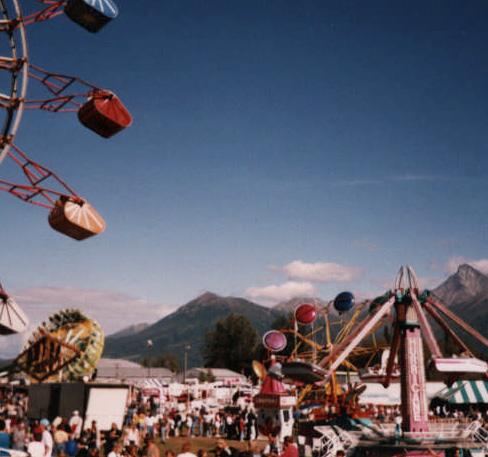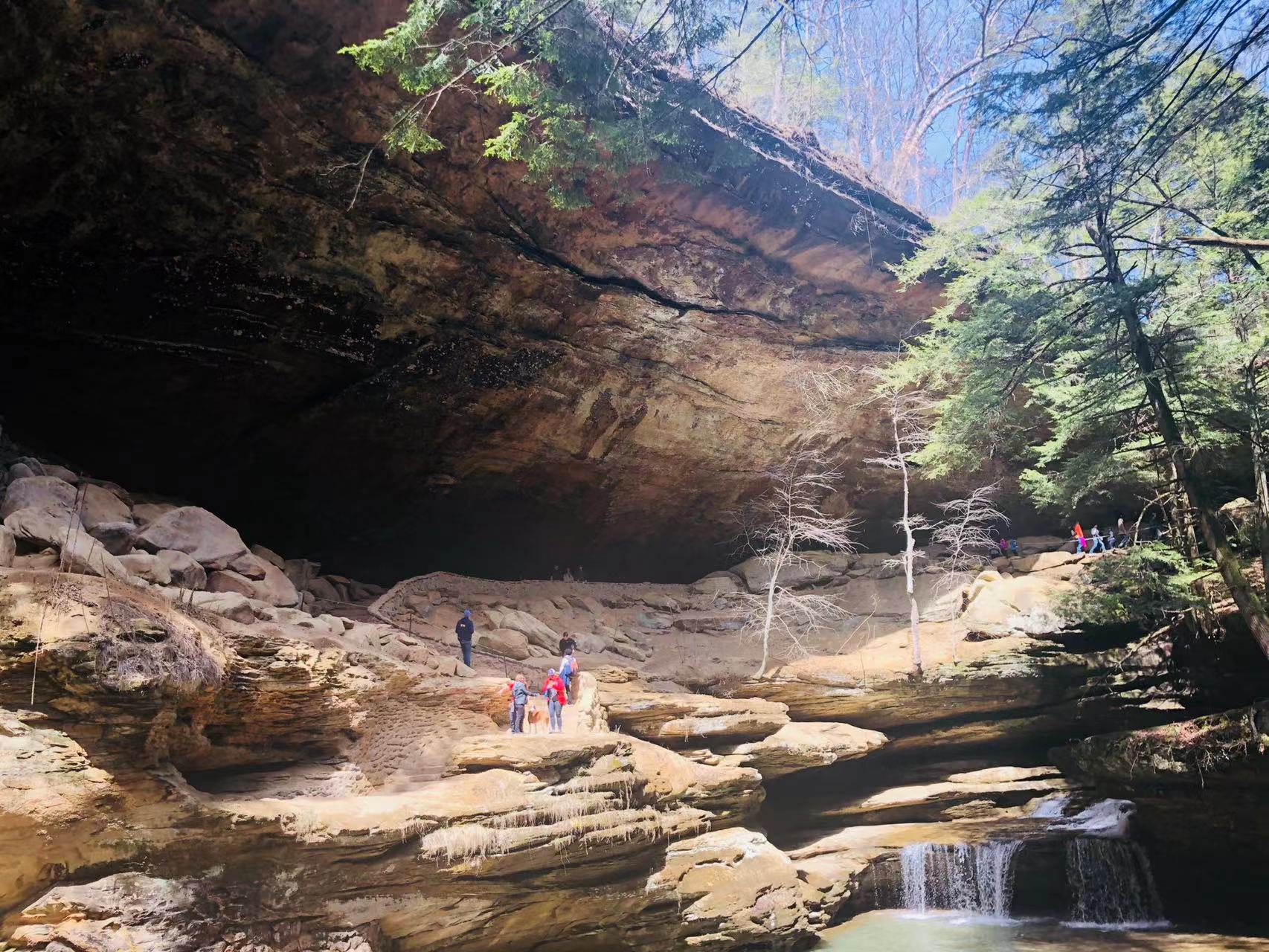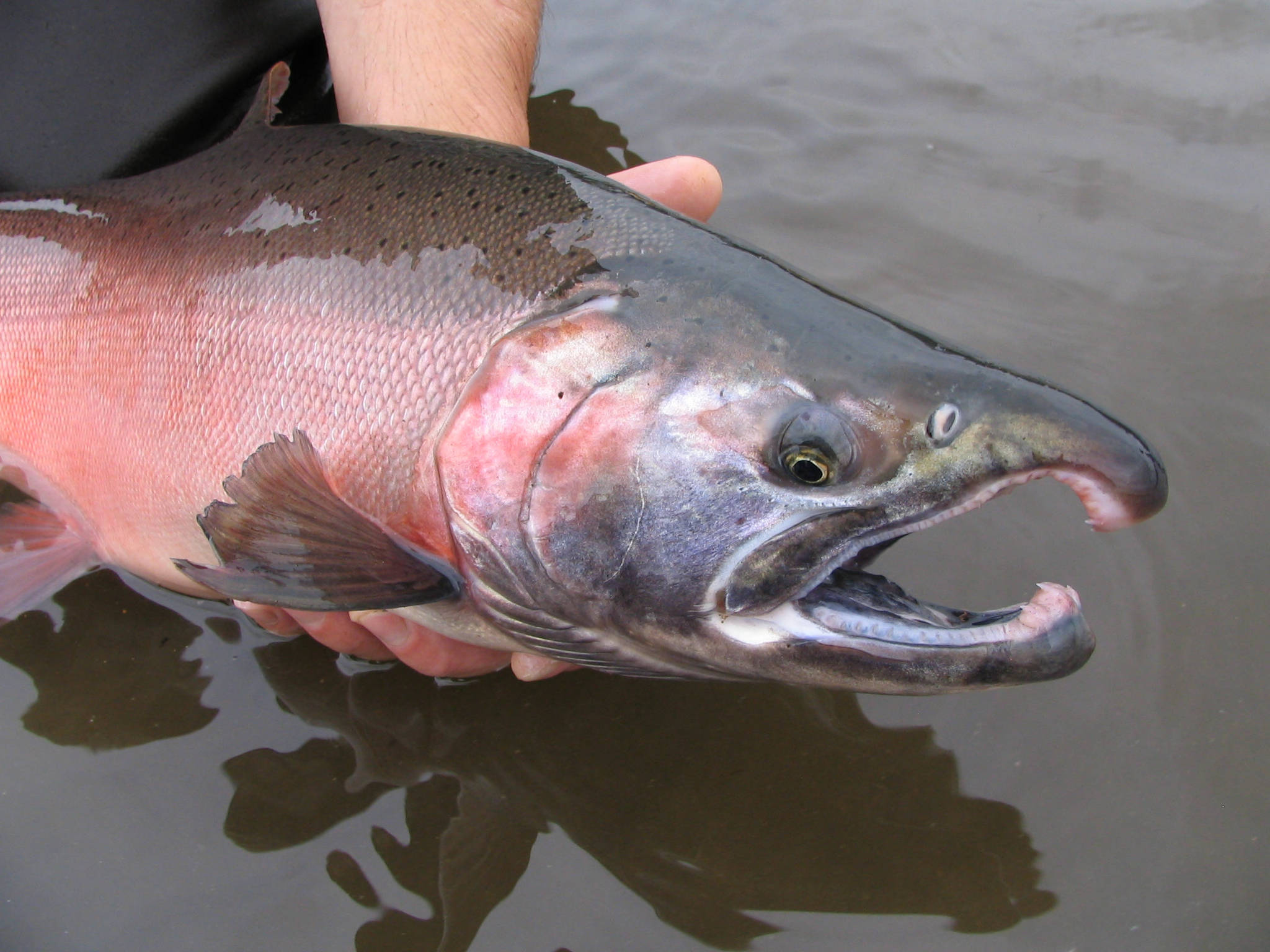|
Matanuska-Susitna Valley
Matanuska-Susitna Valley (; known locally as the Mat-Su or The Valley) is an area in Southcentral Alaska south of the Alaska Range about north of Anchorage, Alaska. It is known for the world record sized cabbages and other vegetables displayed annually in Palmer at the Alaska State Fair. It includes the valleys of the Matanuska, Knik, and Susitna Rivers. 11,000 of Mat-Su Valley residents commute to Anchorage for work (as of 2008). It is the fastest growing region in Alaska and includes the towns of Palmer, Wasilla, Big Lake, Houston, Willow, Sutton, and Talkeetna. The Matanuska-Susitna Valley is primarily the land of the Dena'ina and Ahtna Athabaskan people. The valleys are shaped by three mountain ranges: the Alaska Range, the Talkeetna Mountains and the Chugach Mountains. The Matanuska-Susitna Valley was carved by glaciers leaving thousands of lakes. The Mat-Su rivers and lakes are home to the spawning grounds of chinook, coho, sockeye, pink, and chum salmon. The ... [...More Info...] [...Related Items...] OR: [Wikipedia] [Google] [Baidu] [Amazon] |
Ahtna
The Ahtna (also Ahtena, Atna, Ahtna-kohtaene, or Copper River) are an Alaska Native Athabaskan people of the Athabaskan-speaking ethnolinguistic group. The people's homeland called Atna Nenn', is located in the Copper River area of southern Alaska, and the name Ahtna derives from the local name for the Copper River. The total population of Ahtna is estimated at around 1,427. Their neighbors are other Na-Dené-speaking and Yupik peoples: Dena'ina (west), Koyukon (a little part of northwest), Lower Tanana (north), Tanacross (north), Upper Tanana (northeast), Southern Tutchone (southeast, in Canada), Tlingit (southeast), Eyak (south), and Chugach Sugpiaq (south). Synonymy The name ''Ahtena'', also written as ''Ahtna'' and ''Atnatana'', translates as "ice people." In some documentation the Ahtna have been called Copper Indians because of their ancestral homeland located in the basin of the Copper River and its tributaries in southeastern Alaska. The word for the Copper R ... [...More Info...] [...Related Items...] OR: [Wikipedia] [Google] [Baidu] [Amazon] |
New Deal
The New Deal was a series of wide-reaching economic, social, and political reforms enacted by President Franklin D. Roosevelt in the United States between 1933 and 1938, in response to the Great Depression in the United States, Great Depression, which had started in 1929. Roosevelt introduced the phrase upon accepting the Democratic Party (United States), Democratic Party's presidential nomination in 1932 before winning the election in a landslide over incumbent Herbert Hoover, whose administration was viewed by many as doing too little to help those affected. Roosevelt believed that the depression was caused by inherent market instability and too little demand per the Keynesian model of economics and that massive government intervention was necessary to stabilize and rationalize the economy. During First 100 days of the Franklin D. Roosevelt presidency, Roosevelt's first hundred days in office in 1933 until 1935, he introduced what historians refer to as the "First New Deal", ... [...More Info...] [...Related Items...] OR: [Wikipedia] [Google] [Baidu] [Amazon] |
Alaska Railroad
The Alaska Railroad is a Class II railroad that operates freight and passenger trains in the state of Alaska. The railroad's mainline runs between Seward, Alaska, Seward on the southern coast and Fairbanks, Alaska, Fairbanks, near the center of the state. It passes through Anchorage, Alaska, Anchorage and Denali National Park and Preserve, Denali National Park, to which 17% of visitors travel by train. The railroad has of track, including siding (rail), sidings, rail yards and branch lines. The main line between Seward and Fairbanks is over long. The branch to Whittier, Alaska, Whittier conveys freight railcars interchanged with the contiguous United States via rail barges sailing between the Port of Whittier and Harbor Island in Seattle. Construction of the railroad started in 1903 when the Alaska Central Railroad built a line starting in Seward and extending north. The Alaska Central went bankrupt in 1907 and was reorganized as the Alaska Northern Railroad Company in 1911, ... [...More Info...] [...Related Items...] OR: [Wikipedia] [Google] [Baidu] [Amazon] |
Matanuska-Susitna Borough, Alaska
Matanuska-Susitna Borough (often referred to as the Mat-Su Borough) is a borough located in the U.S. state of Alaska. Its borough seat is Palmer, and the largest community is the census-designated place of Knik-Fairview. As of the 2020 census, the borough's population was 107,081. The borough is part of the Anchorage Metropolitan Statistical Area, along with the municipality of Anchorage on its south. The Mat-Su Borough is so designated because it contains the entire Matanuska and Susitna Rivers. They empty into Cook Inlet, which is the southern border of the Mat-Su Borough. It is one of the few agricultural areas of Alaska. Geography The borough seat is Palmer, and the largest community is the census-designated place of Knik-Fairview, Alaska. As of the 2020 census, the population was 107,081, up from 88,995 in 2010. It is the fastest growing subdivision in Alaska. According to the United States Census Bureau, the borough has a total area of , of which is land an ... [...More Info...] [...Related Items...] OR: [Wikipedia] [Google] [Baidu] [Amazon] |
State Park
State parks are parks or other protected areas managed at the sub-national level within those nations which use "Federated state, state" as a political subdivision. State parks are typically established by a state to preserve a location on account of its natural beauty, historic interest, or recreational potential. There are state parks under the administration of the government of each U.S. state, some of the political divisions of Mexico#States, Mexican states, and in Brazil. The term is also used in the Australian states of template:state parks of Victoria, Victoria and state parks of New South Wales, New South Wales. The equivalent term used in Canada, Argentina, South Africa, and Belgium, is provincial park. Similar systems of local government maintained parks exist in other countries, but the terminology varies. State parks are thus similar to national parks, but under state rather than federal administration. Similarly, local government entities below state level may maint ... [...More Info...] [...Related Items...] OR: [Wikipedia] [Google] [Baidu] [Amazon] |
Chum Salmon
The chum salmon (''Oncorhynchus keta''), also known as dog salmon or keta salmon, is a species of anadromous salmonid fish from the genus ''Oncorhynchus'' (Pacific salmon) native to the coastal rivers of the North Pacific and the Beringian Arctic, and is often marketed under the trade name silverbrite salmon in North America. The English name "chum salmon" comes from the Chinook Jargon term ''tsəm'', meaning "spotted" or "marked"; while ''keta'' in the scientific name comes from Russian language, Russian, which in turn comes from the Evenki language of Eastern Siberia. The term 'Dog Salmon' is most commonly used in Alaska and refers to the Salmon whose flesh Alaskans use to feed their dogs. In Japan, chum salmon is also known as the , or simply , while historically it was known in ''kun'yomi'' as up until the Meiji period. In Greater China, it is known academically as the "kype, hook-snout salmon" ( zh, 钩吻鲑), but is more often called the ''damaha'' fish (), which is loanw ... [...More Info...] [...Related Items...] OR: [Wikipedia] [Google] [Baidu] [Amazon] |
Pink Salmon
Pink salmon or humpback salmon (''Oncorhynchus gorbuscha'') is a species of euryhaline ray-finned fish in the family Salmonidae. It is the type species of the genus ''Oncorhynchus'' (Pacific salmon), and is the smallest and most abundant of the seven officially recognized species of salmon. The species' scientific name is based on the Russian common name for this species ''gorbúša'' (горбуша), which literally means ''humpie''. Description In the ocean, pink salmon are bright silver fish. After returning to their spawning streams, their coloring changes to pale grey on the back with yellowish-white belly (although some turn an overall dull green color). As with all salmon, in addition to the dorsal fin, they also have an adipose fin. The fish is characterized by a white mouth with black gums, no teeth on the tongue, large oval-shaped black spots on the back, a v-shaped tail, and an anal fin with 13–17 soft rays. During their spawning migration, males develop a pronou ... [...More Info...] [...Related Items...] OR: [Wikipedia] [Google] [Baidu] [Amazon] |
Sockeye Salmon
The sockeye salmon (''Oncorhynchus nerka''), also called red salmon, kokanee salmon, blueback salmon, or simply sockeye, is an anadromous species of salmon found in the Northern Pacific Ocean and rivers discharging into it. This species is a Pacific salmon that is primarily red in hue during spawning. They can grow up to in length and weigh . Juveniles remain in freshwater until they are ready to migrate to the ocean, over distances of up to . Their diet consists primarily of zooplankton. Sockeye salmon are semelparous, dying after they spawn. Some populations, referred to as kokanee, do not migrate to the ocean and live their entire lives in fresh water. Classification and name origin The sockeye salmon is the third-most common Pacific salmon species, after pink and chum salmon. ''Oncorhynchus'' comes from Ancient Greek ὄγκος (''ónkos''), meaning "bend", and ῥύγχος (''rhúnkhos''), meaning "snout". The specific name ''nerka'' is the Russian name for ... [...More Info...] [...Related Items...] OR: [Wikipedia] [Google] [Baidu] [Amazon] |
Coho Salmon
The coho salmon (''Oncorhynchus kisutch;'' Karuk: achvuun) is a species of anadromous fish in the salmon family (biology), family and one of the five Pacific salmon species. Coho salmon are also known as silver salmon (or "silvers") and is often sold as medium red salmon. The scientific species name is based on the Russian language, Russian common name ''kizhuch'' (кижуч). Description During their ocean phase, coho salmon have silver sides and dark-blue backs with spots on their back and upper tail lobe. During their spawning phase, their jaws and teeth become hooked. After entering fresh water, they develop bright-red sides, bluish-green heads and backs, dark bellies and dark spots on their backs. Sexually maturing fish develop a light-pink or rose shading along the belly, and the males may show a slight arching of the back. Mature adults have a pronounced red skin color with darker backs and spots, with females having darker shades than males. Coho salmon average 20 to ... [...More Info...] [...Related Items...] OR: [Wikipedia] [Google] [Baidu] [Amazon] |
Chinook Salmon
The Chinook salmon (''Oncorhynchus tshawytscha'') is the largest and most valuable species of Oncorhynchus, Pacific salmon. Its common name is derived from the Chinookan peoples. Other vernacular names for the species include king salmon, quinnat salmon, spring salmon, blackmouth, and tyee salmon. The scientific species name is based on the Russian common name ''chavycha'' (чавыча). Chinook are anadromous fish native to the North Pacific Ocean and the river systems of western North America, ranging from California to Alaska, as well as Asian rivers ranging from northern Japan to the Palyavaam River in Arctic northeast Siberia. They have been introduced to other parts of the world, including New Zealand and Patagonia. Introduced Chinook salmon are thriving in Lake Michigan and Michigan's western rivers. A large Chinook is a prized and sought-after catch for a sporting angler. The flesh of the salmon is also highly valued for its dietary nutritional content, which includes h ... [...More Info...] [...Related Items...] OR: [Wikipedia] [Google] [Baidu] [Amazon] |
Glacier
A glacier (; or ) is a persistent body of dense ice, a form of rock, that is constantly moving downhill under its own weight. A glacier forms where the accumulation of snow exceeds its ablation over many years, often centuries. It acquires distinguishing features, such as crevasses and seracs, as it slowly flows and deforms under stresses induced by its weight. As it moves, it abrades rock and debris from its substrate to create landforms such as cirques, moraines, or fjords. Although a glacier may flow into a body of water, it forms only on land“Glacier, N., Pronunciation.” Oxford English Dictionary, Oxford UP, June 2024, https://doi.org/10.1093/OED/7553486115. Accessed 25 Jan. 2025. and is distinct from the much thinner sea ice and lake ice that form on the surface of bodies of water. On Earth, 99% of glacial ice is contained within vast ice sheets (also known as "continental glaciers") in the polar regions, but glaciers may be found in mountain ranges on ever ... [...More Info...] [...Related Items...] OR: [Wikipedia] [Google] [Baidu] [Amazon] |








